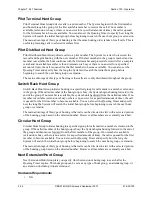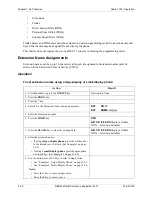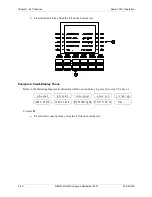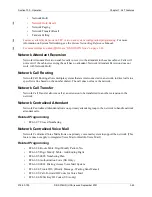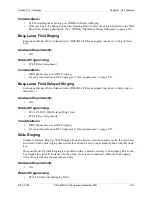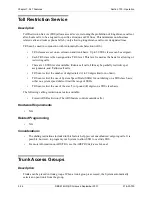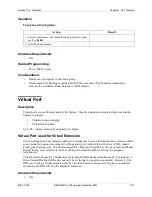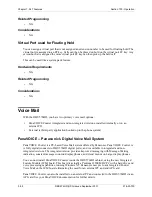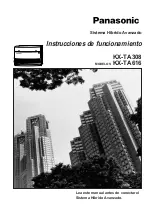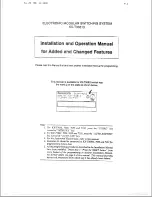
3-44
DBS 576HD (USA) issued September 2001
576-50-700
Chapter 7. SLT Features
Section 700 - Operation
•
PSD names can contain a maximum of 7 characters. SSD names can contain a maximum of 16
characters.
•
The ability to make extension name assignments is allowed/restricted to anyone with a Class of
Service (COS) that allows access to User Maintenance features. (See Chapter 4 “User
Maintenance” of this document.)
Network BLF
Panasonic’s Network Busy Lamp Field (BLF) Display is a PC-based application that
monitors the activity (in use/on-hook/special feature set) of phone extensions across a
Local Area Network (LAN) or Wide Area Network (WAN).
This allows an attendant to use his or her phone’s BLF keys to monitor the status of
extensions on different networked systems, for example. Users can also view phone
extension status on special browser applications on PCs anywhere in the network.
Setting up the Network BLF Display system includes configuring a Server PC, Client PCs
and Browser PCs to work with networked DBS 576/DBS 576HD systems. An API card
and Network BLF-specific programming is required. For detailed installation and setup
instructions, see
Section 565 - Network BLF Display System Administrator Manual.
Hardware Requirements
•
See
Section 565 - Network BLF Display System Administrator Manual.
Related Programming
•
See
Section 565 - Network BLF Display System Administrator Manual.
Considerations
•
See
Section 565 - Network BLF Display System Administrator Manual.
Network Facilities
Description
The System supports
T1 and QSIG
networking facilities such as:
•
Network Attendant Reversion
•
Network Call Forward
•
Network Call Routing
•
Network Call Transfer
•
Network Caller ID
•
Network Camp On / Call Waiting
•
Network Centralized Attendant
•
Network Centralized Voice Mail
•
Networking Extension Calling
•
Network Flash Transfer





